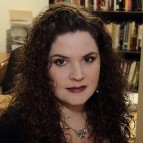Monica Patterson Writes About Children’s Museology

Associate Professor Monica Patterson (Cross-Appointed with the Institute of Interdisciplinary Studies and the History Department) has written an article for the American Alliance of Museums detailing how the current pandemic has affected museums and how a new children’s museology is emerging as a result. A short excerpt is included below, with the full article, “Children’s Museology and the COVID-19 Crisis” available online.
While physical museums are facing an uncertain future, virtual museum visitorship is booming. The Louvre’s web traffic has increased tenfold to four hundred thousand visits a day, and New York’s Metropolitan Museum of Art reports an elevenfold uptick in visits to #MetKids, its youth education initiative.
This forced quantum leap into virtual visitorship intersects powerfully with young people’s preferred technologies, enabling them to participate more prolifically and publicly in museum programming than ever before. As a result, I argue, a new critical children’s museology is emerging at the forefront of virtual museological practice. As I define it, children’s museology refers to the production of museum content and programming not just for or about children, but also by and with children in ways that engage them as valued social actors and knowledge-bearers.
Children make up almost 23 percent of the population in the US, and almost 30 percent in the world, but they are often treated as blank screens upon which adults cast their own values, hopes, and fears—as often seen in societal debates about them. As childhood studies scholars and children’s rights advocates have argued for decades, children must instead be seen as active in the construction and determination of their own social lives and the societies in which they live. Within households, for instance, children require care, but they also contribute significant emotional and physical labor. Children are observant and reflective, and, like adults, have ideas and experiences that can productively inform efforts toward social change. They hold a great deal of knowledge—not least about themselves and other children, and the circumstances of childhood in their historical moment and cultural location. However, much of this knowledge is not valued or recognized as such by adults.